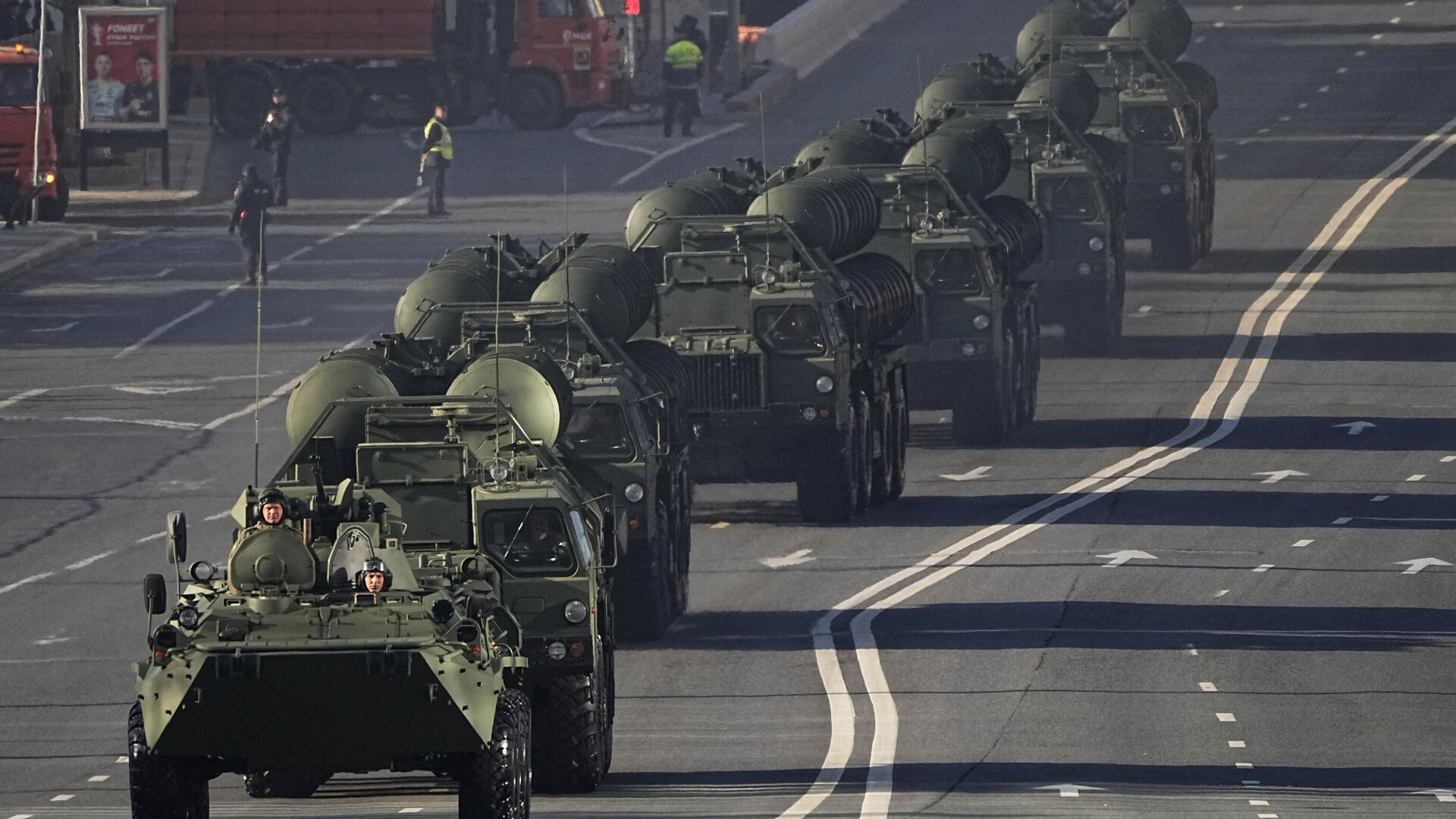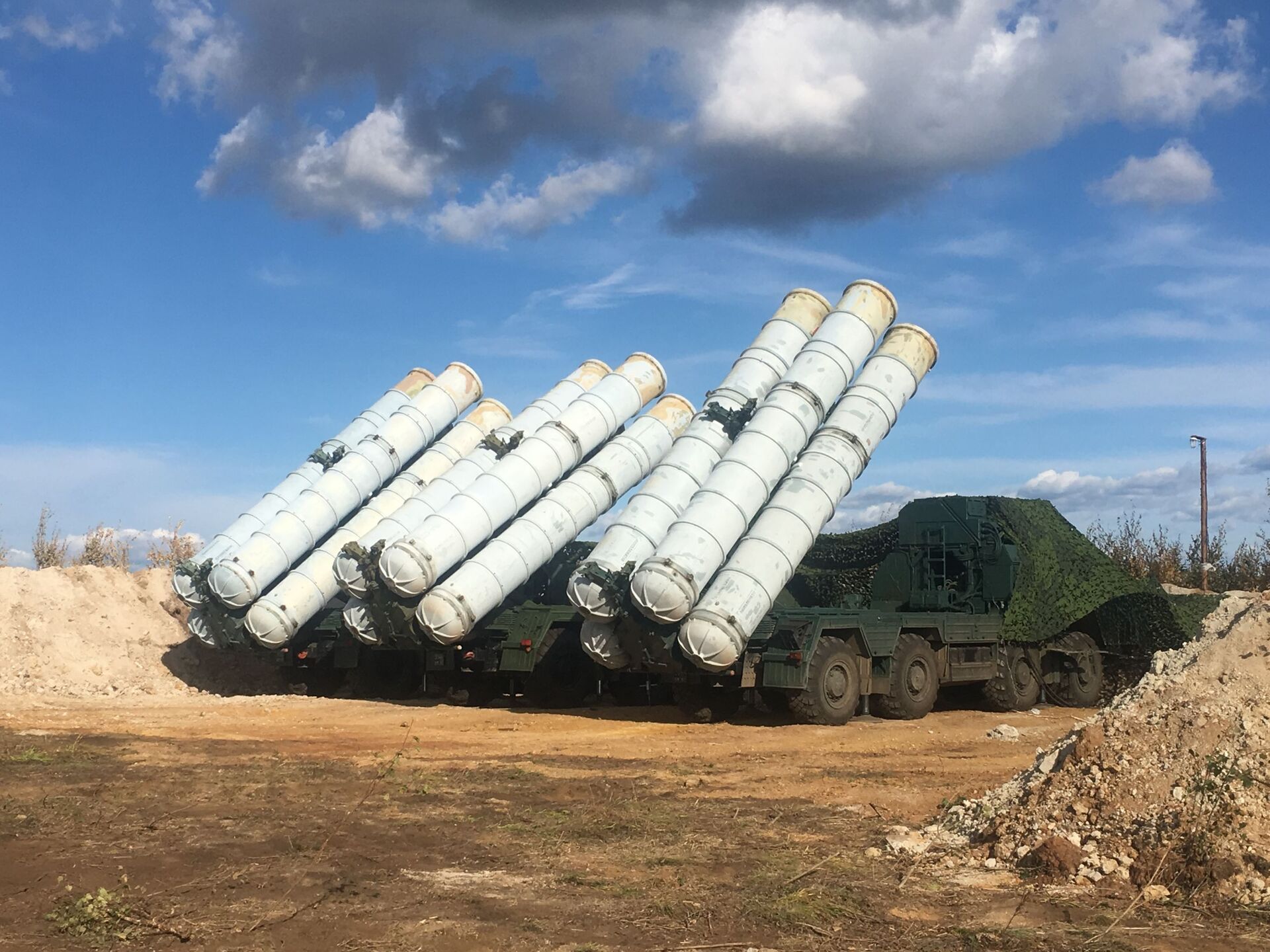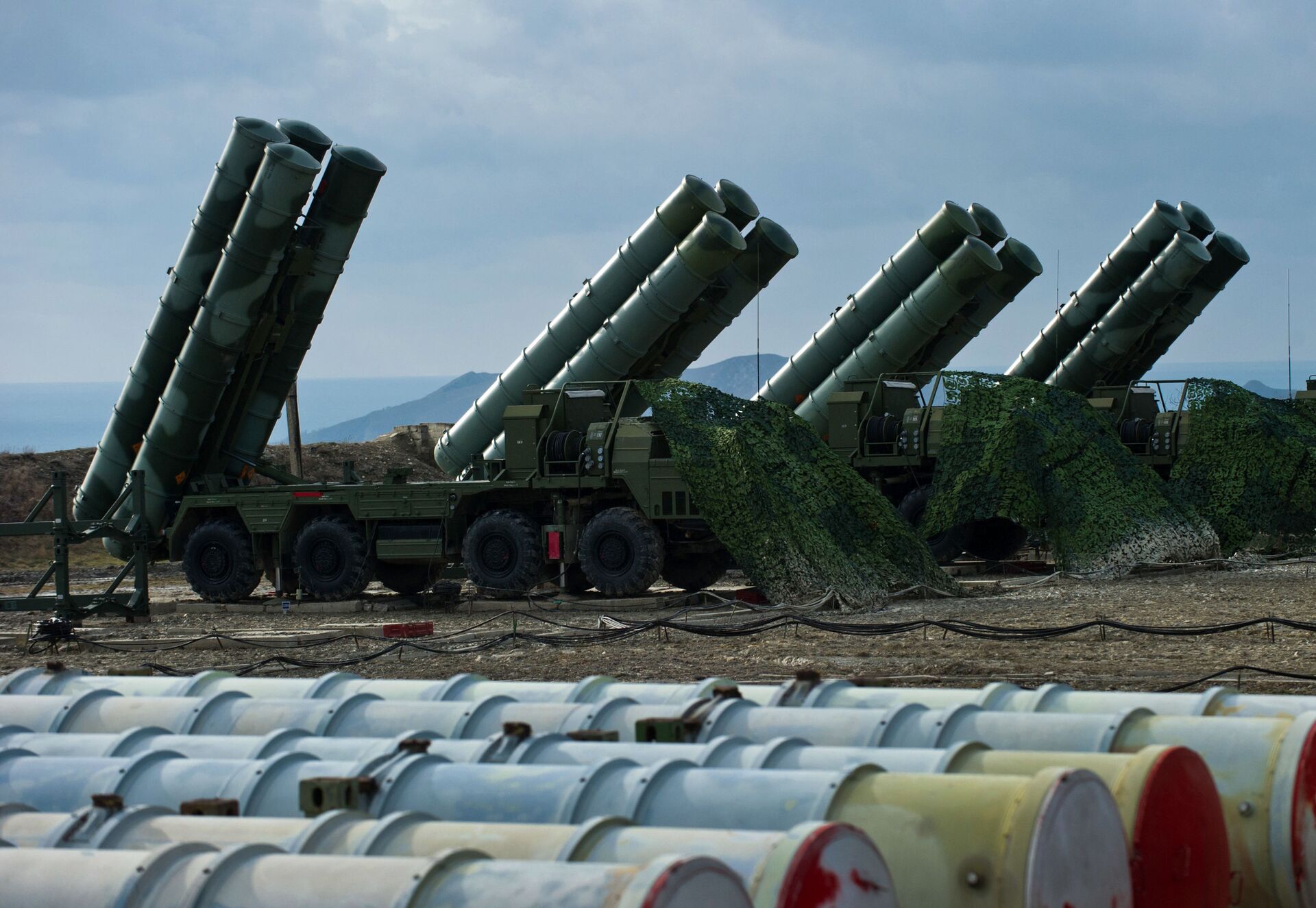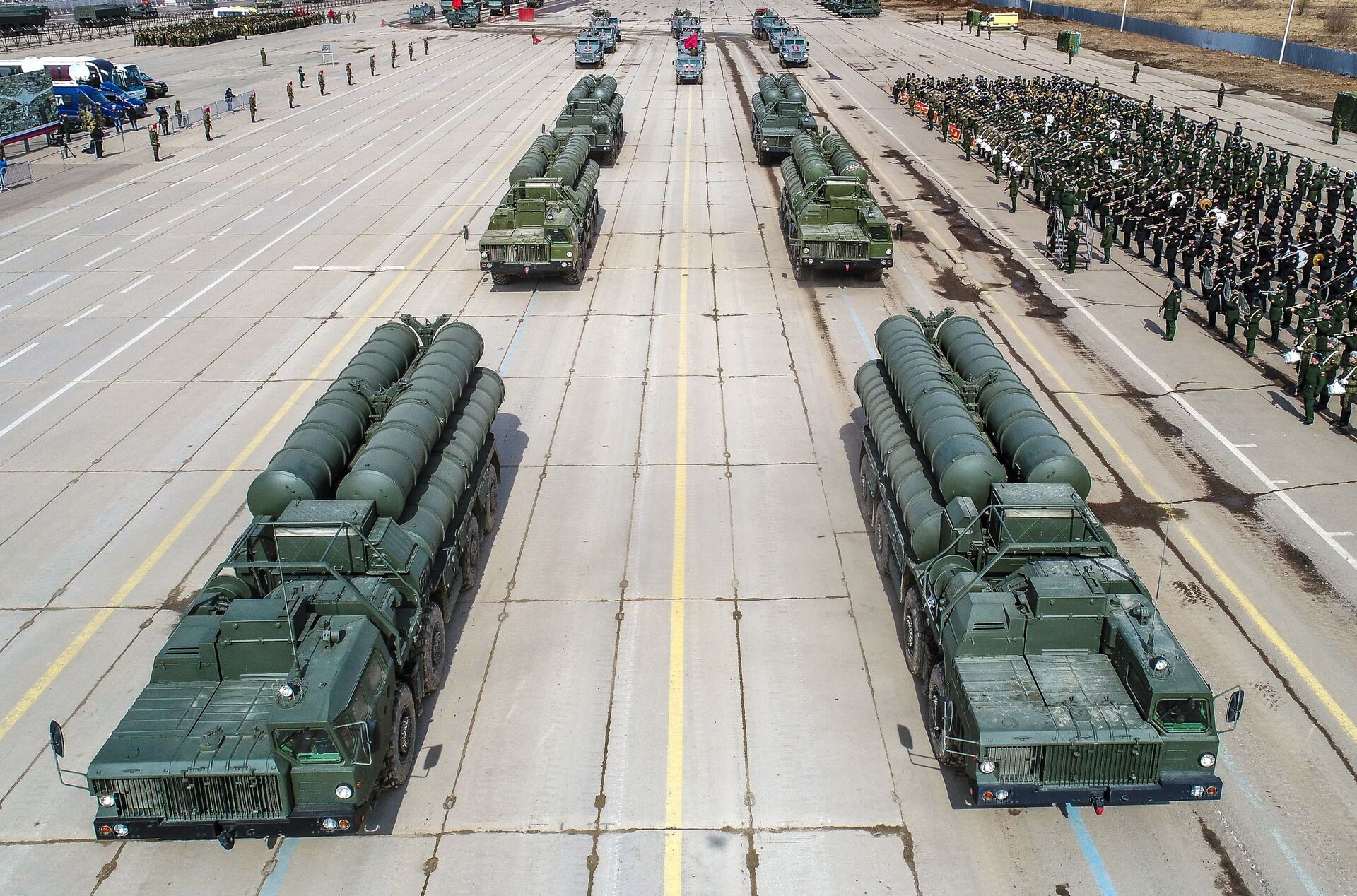IAF Strives To Make Indian Airspace Inviolable with S-400 and Project Kusha

© AP Photo / Alexander Zemlianichenko
Subscribe
With India bolstering its airspace security, retired IAF Jaguar pilot Vijainder K Thakur explores the possibilities of the S-400 air defense systems in his column for Sputnik India.
Introduction
On October 3, speaking at the annual press conference to commemorate Air Force Day (October 8), Indian Air Force (IAF) Chief of Air Staff (CAS), Air Chief Marshal VR Chaudhari, provided an update on India's S-400 procurement contract with Russia.
"Our contract was for five systems and three have been delivered. There is a hindrance in delivery due to the Russia-Ukraine war and we are sure that in the next one year, we will be getting the remaining systems. We are also using the Indigenous Project Kusha for indigenous long-range air defence system," said the CAS.
Not much is known in the public domain about Project Kusha referred to by the CAS, other than the facts that the MoD has allocated Rs 21,700 crores for its implementation by the Defence Research and Development Organisation (DRDO) jointly with private and public sector industry.
Likely Scope of Project Kusha
According to the CAS, Project Kusha is aimed at developing an indigenous long-range (LR) air defence (AD) system. As such, it is unlikely that Project Kusha is conceived as an S-400 analogue. The S-400 is an Integrated Air Defence System (IADS) designed to address long, medium and short range aerial threats, while Project Kusha is aimed exclusively at LR AD.
India is known to be developing a LR surface-to-air missile (SAM) system. During an interview to the press in September 2019, DRDO Chief Satheesh Reddy stated that "LR SAM is a priority area for development.."
He also stated in the interview that the LR SAM is in an advanced state of development
"Some of the systems under advanced development include long-range surface-to-air missiles…"
On August 22, 2013, in an interview published by The Hindu, DRDO Chief Avinash Chander had said his organisation was developing a surface to air missile with a range of 250-300 km.
Some press reports have alluded to the project as XR-SAM.
XR-SAM Development Challenges
The challenge in developing a long range LR AD system is as much in developing a suitable missile as in developing a seeker for the missile and a radar capable of LR detection, tracking and guidance.
The missile must be capable of very high acceleration and speed in order to reach its target in reasonable time.
The seeker must be capable of long range lock-on and be resistant to jamming and spoofing.
Long range radar detection has its own challenges on account of radar horizon limitations and low tracking resolutions.
Finally, there is the question of mobility of the system. The missile launchers, radars, and control centre need to be built upon powerful vehicles with off road and high altitude capability.
As such, it's likely that Project Kusha is focused exclusively on developing a LR AD capability, not an IADS system.
Understanding An IADS Like The S-400 System
The scope of an IADS like the S-400 system far exceeds the scope of a missile defence system.
The S-400 system, for example, was built to the following qualitative requirements
1.
An open system architecture with a high level of modularity, to facilitate capability growth 2.
Multirole capabilities and the capacity for integration with legacy AD missile and radar systems. 3.
Capability to protect fixed infrastructure targets, as well as military assets on the move. 4.
Suitability for integration with naval surface combatants 5.
High operational mobility and deployability 6. High lethality and jam resistanceThe S-400 can operate autonomously integrating with superior S-400 command post or external radar data transmission systems. In simpler words, an S-400 system can be cued by another IADS or a radar external to the system feeding raw trace data or target specific data. It can even be cued using a data link from superior command posts. We will dwell on this more later in the narrative.
System of Systems
As mentioned above, the S-400 is a system of systems that can integrate short, medium and long range AD systems. For example, it is possible for the IAF to integrate the Indo-Israeli MR-SAM system with the S-400 system.
Developing an AD missile system can easily take more than a decade. Developing a viable IADS would need several decades. As such, the logical progression for the IAF would be to first integrate indigenous missile systems, such as the MR-SAM, into the S-400 systems that it is acquiring from Russia. The integration process by itself could easily take another decade.
The MR-SAM project has already been completed and a few systems have already been inducted into the service.
Indeed, the fact that the IAF has deployed both a S-400 and a MR-SAM system at Air Force Station (AFS) Adampur may not be purely for operational reasons. It may well be indicative of an attempt to integrate the two systems.
Project Kusha Challenges
DRDO's XR-SAM project, already a decade old, is far from maturity. For example, in the current threat scenario, a long range detection and tracking capability has little value unless it includes counter stealth capability.
Counter Stealth Capability
The IAF needs a counter stealth detection and tracking capability, particularly so across our northern borders, because our adversary not only has stealth fighters but also stealth drones. Typically, such counter stealth detection and tracking capability is provided by multiband radars such as the Russian Nebo (Sky) series of radars.
The self-propelled Nebo M is a package of three discrete radars - VHF band Nebo SVU, the L-band Protivnik G and the S/X-band Gamma S1 - and a single processing and command van, each hosted on a 8 x 8 all terrain 24 tonne chassis.
Each of the radars is equipped with the Orientir location system, comprising three Glonass satellite navigation receivers on a fixed frame, and they are connected via wireless or cable datalink to the KU RLK command and control cabin.
The principle behind Nebo-M is the fusion of data from the three radars to create a robust kill chain. The VHF system performs initial detection and cues the UHF radar, which in turn can cue the X-band RLM-S. The Orientir system provides accurate azimuth data (which Glonass/GPS on its own does not support), and makes it possible for the three signals to be combined into a single target picture.
Nebo radars can exchange processed targeting data with AD missile systems like Pantsir, S-300 and S-400.
India has embarked on developing counter stealth radar capability. In the past there were reports that DRDO-owned LRDE laboratory is developing a C-band (UHF-band) high-power and wide-scanning active phased-array radar for use with the DRDO-developed XR-SAM long-range SAM.
Advanced Seeker Technology
India's missile seeker technology is still in a nascent stage. It's built around the Ku-band Active Radar Seeker (Ku-band ARS) that DRDO built and tested in 2016, based on Russian technology transfer.
It's likely that it will take another decade for the DRDO to develop an active AESA radar seeker or a TVM (Track Via Missile) semi active radar seeker capable of long range interception.
Miniaturising a phased-array radar antenna while retaining its long range detection capability has its challenges. You need supporting microelectronics with adequate processing power. You need advanced algorithms to ensure that the missile can discriminate between targets and decoys.
Local Production of S-400 systems
DRDO appears to be firmly on a trajectory to acquire the capability to domesticall develop an IADS. However, it will likely take another 15 to 20 years for the DRDO to develop and operationally field a clean sheet IADS.
In the interim, the IAF needs to keep its airspace inviolable by integrating new indigenously developed missile and radar systems with the S-400.
By continuing to use the S-400 framework for integrating its newly developed AD systems, the IAF will be able to leverage Russian technological advances as soon as they become available. For example, Russia is increasing the granularity of the S400's multilayered engagement capability to launcher level. One or more of each four tube 40N6, 48N6 LR missile launcher would be modified to accommodate multiple close range 9M96E1, 9M96E2 missiles.
Russia is reportedly developing a long range surface-to-surface missile that can be launched using the launcher of the S-400. The long range surface-to-surface missile will give the S-400 a credible counter battery capability to protect it from attacks by long range MLRS (Multiple Launch Rocket Systems). You can read more about this S-400 capability in our earlier Sputik India analysis.

S-400 Triumph anti-aircraft missile system seen during the Vostok-2018 military drills
© Sputnik / Russian Ministry of Defence
/ Technology Tie-Ups - The Challenge Before Russia & India
In the past, IAF sources have indicated that the operational requirement is for 10 S-400 systems.
In September 2019, Russia's state corporation Rostec CEO, Sergey Chemezov, said that both India and Russia are currently in talks to launch a local S-400 production line in India.
For local production of S-400 to be feasible, Russian state owned AD system developer Almaz-Antey needs to set up joint ventures with Indian private sector companies.
In 2015, following the clearance of the S-400 deal, Reliance Defence had signed agreements with Almaz Antey for manufacturing missile components in India. However, Reliance Defence doesn't exist anymore. It's not known if Almaz-Antey is looking at alternative private sector tie-ups. The Make-in-India paradigm makes it absolutely essential for Russian state owned military industrial companies to nurture tie-ups with leading Indian private sector companies.
One reason why Russian participation in Indian defence manufacturing is declining is because Indian Ministry of Defence (MoD) trusted defence private sector majors, such as Larsen & Toubro (L&T), Tata Advanced Systems Ltd (TASL), Mahindra Group and Kalyani Group; have a historical western orientation. They have technology tie ups with western companies. Unless Russia changes the landscape with aggressive private sector defence manufacturing tie-ups in India, it will continue to lose ground.
Conclusion
It's likely that DRDO and the IAF will adopt an evolutionary approach to the development of an Indian IADS. The development process could take around two decades.
The approach would likely involve the DRDO and the IAF first getting their feet wet by first integrating Indian missile systems with the S-400 IADS. Simultaneously, DRDO in partnership with private industry, could pursue local manufacture of S-400 missile, radar, networking, control, and EW and mobility subsystems. On a different track, DRDO needs to pursue development of indigenously developed multi-band counter stealth radars, EW, networking, data processing and control systems.
Integrating the MR-SAM would be a good first step. Later, the options of integrating QR-SAM and Akash NG systems could be looked at, eventually followed by the integration of the XR-SAM.
The IAF is known to be seeking final approval for a Rs 7,500 crore project for Close in Weapon Systems (CIWS) to be manufactured in the private sector. A CIWS is a critical component of an IADS, not just to protect the target, but also to protect the IADS!
Currently, Russian IADS capability is globally the most advanced. It has been thoroughly battle tested and honed in Syria and Ukraine. India can greatly benefit, through sustained collaboration between the defence industries of the two nations, from Russian operational experience and technological advances in AD systems integration. To facilitate such industry to industry collaboration, Russia needs to invest in Indian military manufacturing capability, rather than simply attempt to sell weapon systems to India.



